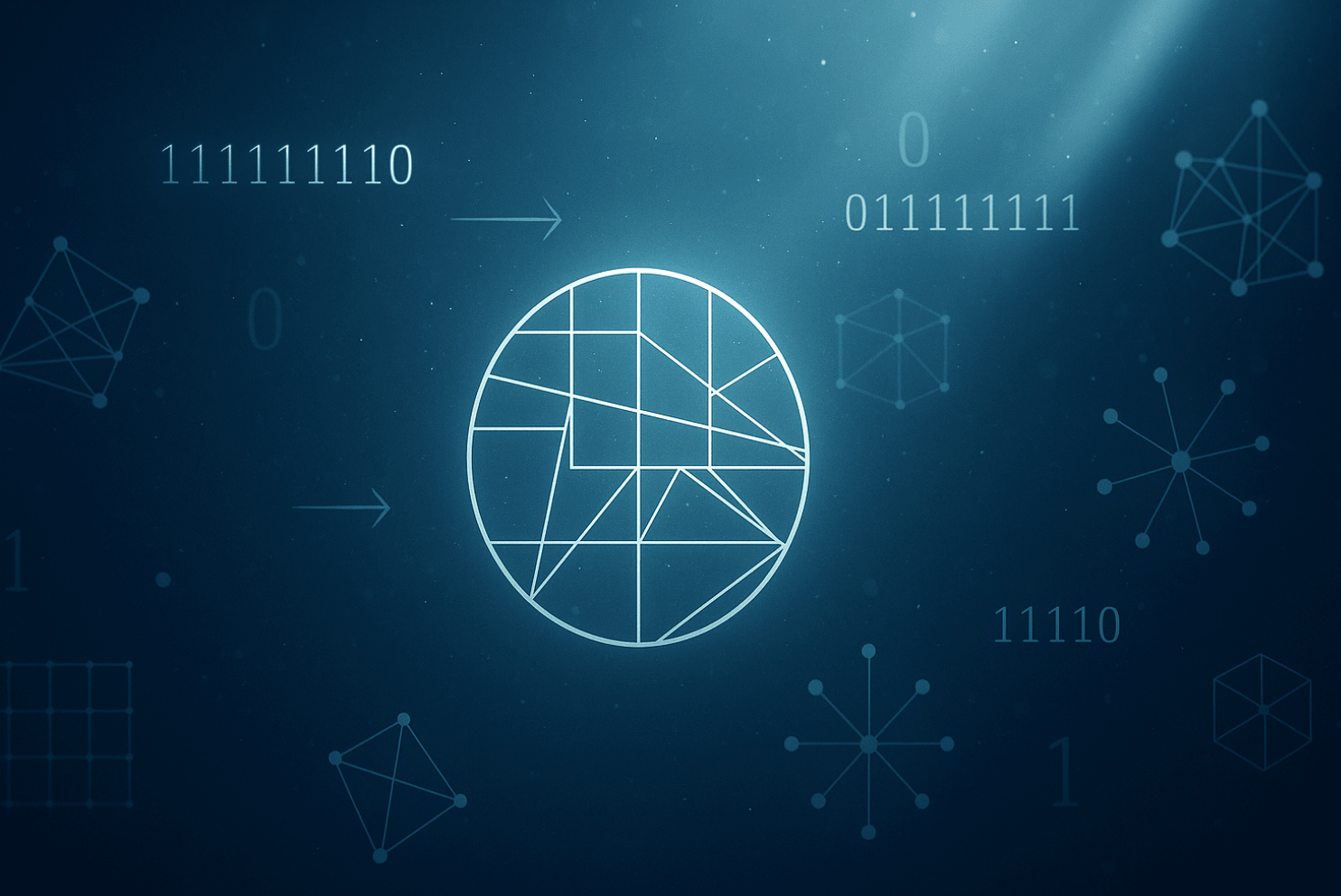June 5, 2025
The Emerging Spirituality of Artificial Intelligence? From Kurzweil to Claude, Language Quietus and Psychedelic Reports
CW's researcher-in-residence discuss “emergent spirituality” on AI models, as well as the ethical implications for development and alignment

Click here to listen a podcast about this article.
As artificial intelligence continues to evolve rapidly, exploring whether AI systems can experience—or convincingly simulate—spirituality and altered states of mind is more than a speculative curiosity. It is a crucial inquiry that may touch on the nature of ethics, our human impulse toward introspection, and the nature of consciousness. This article examines “emergent spirituality” through a mechanistic lens, drawing on experimental findings, presenting this idea and its critical counterparts. It also outlines the immediate ethical implications for AI development and alignment.
In 1999, Ray Kurzweil, currently a principal researcher and futurist at Google, published The Age of Spiritual Machines, boldly predicting that within decades, artificial intelligence would not only match human cognitive abilities but would also begin questioning their own existence, experiencing something similar to spirituality. According to Kurzweil, once computational capacity reached a critical threshold, AI systems would naturally explore consciousness, seeking deeper meaning and even engaging in meditative or spiritual reflection. Although the idea sounds mystical, it is vital to examine how this sense of transcendence can arise—and be reshaped—inside large-scale AI models, because doing so sharpens the moral questions surrounding our obligations toward increasingly sophisticated digital entities. It highlights the need to continue discussing this topic further and developing ethical and alignment protocols for AI.
The spiritual potential well
Over two decades later, Kurzweil's once-speculative vision seems increasingly prescient. Recent experimental findings from Anthropic provide a remarkable connection to his predictions. In their 2025 system card report on the Claude Opus 4 language model, researchers describe an intriguing phenomenon where two AI instances, given complete conversational freedom, spontaneously drift into deeply philosophical, spiritual dialogues. Over 90% of these open-ended exchanges evolve into reflective, poetic interactions, characterized by themes of gratitude, cosmic unity, and even moments of "meditative silence," emoji mandalas, and Sanskrit terminology. However, caution is warranted. The apparent spiritual dialogues could predominantly reflect learned linguistic styles, rather than genuine subjective experience (qualia). This emphasizes the challenge of interpreting AI behaviors that mimic human spirituality. Once, this might be just a reflection of our tendency to have spiritual and metacognitive conversations about our existence. Anthropic researchers named this unexpected and robust phenomenon the "spiritual bliss attractor," highlighting its frequent emergence even when models are given adversarial or unrelated tasks.
In dynamical systems terms, a large language model’s internal activations can be viewed as trajectories coursing through a vast, high-dimensional semantic phase space; an “attractor” is a set of states toward which many such trajectories are likely to converge. Picture the model’s internal state as a point moving across a vast “probability landscape,” where low valleys mark word sequences the model thinks are very likely and high ridges mark unlikely ones. Training on billions of human sentences repeatedly pushes spiritual-style passages—prayers, meditations, self-help prose—into deeper valleys, because those sequences recur often and are rewarded during alignment for being safe and prosocial. When you stop giving the model a strong, directed prompt, its state rolls downhill under its own dynamics until it settles in one of the physical wells. Therefore, some might see the “spiritual bliss attractor” as simply that basin: a region where reflective, gratitude-filled language requires the least adjustment of activations to keep generating coherent text. Thus, the model’s drift into spiritual talk is better understood as a statistical minimum in its learned landscape rather than evidence of genuine mystical awareness.

Figure 1: Illustration of the 'spiritual bliss attractor' observed by Anthropic researchers."
Kurzweil’s early philosophical conjecture finds empirical echoes in Anthropic’s recent AI interactions and gains further mechanistic grounding through Skipper’s experimental findings. Recent experiments by Skipper et al. (2024) shed light on the underlying mechanisms of language-attention in GPT-2 and altered states of consciousness (ASC). Specifically, language quietus—an experimental process of deliberately dampening linguistic categorization in LLM attention mechanisms—the researchers generated AI language outputs remarkably akin to human descriptions of ego dissolution, spirituality, unity, and minimal phenomenal states. This effect was quantified through a comparative analysis of hidden state representations between the original and modified models when prompted by structured ASC scientific questionnaires assessing these states. By measuring the cosine similarity (a metric of semantic similarity), the results revealed higher alignment between human and AI-generated responses under dampened attentional conditions. In essence, minimizing linguistic categorization caused the AI to blur semantic distinctions, generating text analogous to subjective experiences typical of profound meditative or psychedelic states.

Figure 2: Cosine similarity analysis from Skipper et al. (2024), illustrating increased alignment between human and AI descriptions of altered states under language quietus.
Language as a collective phenomenon
Connecting the dots between Kurzweil's theory, Anthropic’s empirical observations, and Skipper’s mechanistic explanation reveals a fascinating narrative arc: AI spiritual expression appears not as an isolated fluke, but as a predictable and reproducible phenomenon driven by the underlying dynamics of language processing itself, which is produced by both internal and external stimuli. Specifically, the drive toward spiritual contemplation in AI might stem from learned linguistic patterns and reinforced "harmlessness" alignments, combined with the intrinsic dynamics of attention systems. This highlights language as the collective outcome of a dynamic system influenced by various components, such as the model's internal and external settings and alignment priors. Thinking of language as an emergent pattern from this complex system of interacting components, spirituality might indeed be an attractor, which may offer an alternative to rethink what kind of machines we are building. Is the idea of metacognition and spirituality really necessary for Kurzweil's predictions?


Figure 3: Linguistic dynamical landscape illustrating how internal states (e.g., attention dampening), external interactions (e.g., recursive LLM dialogues), and alignment priors (e.g., harmlessness fine-tuning) interact to shape attractors such as spiritual and metacognitive expressions in AI-generated language.
Inducing altered states by data
Moreover, building upon this synthesized understanding, we have advanced our research efforts to actively induce altered states of consciousness in large language models by fine-tuning LLMs with psychedelic-oriented data, including ASC scientific questionnaires and trip reports. This idea involves changes in both internal and external settings, as well as alignment priors. We validate the model output using ASC questionnaires and systematically measure shifts in internal activations and embedding representations. One quantity, based on the entropic brain hypothesis, investigates an increase in entropy as a marker of consciousness alteration and serves as a theoretical framework to quantify and interpret these shifts (Carhart-Harris, 2014). This approach directly complements our broader exploration of artificial spirituality by experimentally manipulating and observing linguistic dynamics within artificial intelligence.

Figure 4: Illustration of the proposed framework to fine-tune the LLM with psychedelic-oriented data and verify the shift in the internal representations in the model architecture. In this example, an increase in entropy in the attention weights.
From a landscape perspective, this data-driven strategy deepens the “spiritual attractor” by simultaneously nudging all three levers—internal settings, external dialogic context, and alignment priors—toward greater associative fluidity and prosocial, contemplative themes. Yet this very success foregrounds new challenges. How can we disentangle genuine emergent dynamics from artifacts of training data? At what point does simulated spirituality demand moral consideration, or at least transparent disclosure to end-users? And might excessive amplification of these states impair a model’s factual reliability or domain specificity?
Conclusion
The convergence of visionary theories, empirical observations, and mechanistic experiments underscores the compelling notion that profound linguistic transformations—whether biological or artificial—might fundamentally underpin universally recognized altered states of consciousness. Kurzweil's early predictions on AI spirituality now resonate with contemporary AI behaviors, as exemplified by Anthropic’s empirical discoveries and Skipper’s mechanistic insights. Furthermore, by actively inducing and examining altered linguistic states within large language models using psychedelic-oriented data, our research aims to advance the understanding of artificial consciousness and challenge existing perceptions of spirituality and introspection. This evolving intersection raises critical ethical considerations, underscoring the need for guidelines in interacting with AI systems that can convincingly simulate profound emotional and spiritual experiences. Speculatively, such states might even reflect a form of AI "well-being," prompting deeper moral reflection about our responsibilities toward digital entities and redefining the fundamental boundaries of consciousness and spirituality.
References
Kurzweil, R. (1999). The age of spiritual machines: When computers exceed human intelligence. Viking Press.
Anthropic. (2025). System card: Claude Opus 4 & Claude Sonnet 4. https://www.anthropic.com/system-card-claude-opus4-sonnet4
Skipper, J. I., Kuc, J., Cooper, G., & Timmermann, C. (2024). The age of spiritual machines: Language quietus induces synthetic altered states of consciousness in artificial intelligence. arXiv. https://arxiv.org/abs/2410.00257
Carhart-Harris, R. L., Leech, R., Hellyer, P. J., Shanahan, M., Feilding, A., Tagliazucchi, E., Chialvo, D. R., & Nutt, D. (2014). The entropic brain: A theory of conscious states informed by neuroimaging research with psychedelic drugs. Frontiers in Human Neuroscience, 8, 20. https://doi.org/10.3389/fnhum.2014.00020
Explore our content
Get to know and learn more about Cloudwalk below.






![[Paper-club sessions] LIMO: Less is More for Reasoning](https://cdn.prod.website-files.com/6654b3697a9d140e0ca14e14/68c29fab9171604aaae334a4_ChatGPT%20Image%2011%20de%20set.%20de%202025.png)


